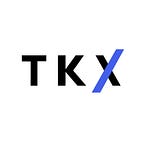Perp for Any Assets: Surf Protocol | TKX Weekly
by @Guaaronnnn
editor @uuwagyuu
sponsor TKX CAPITAL
In the world of DeFi, platforms like dYdX, Perp, and GMX have brought perpetual trading to the forefront, but with a limited range of assets. Surf Protocol steps in with a wide array of over 10,000 assets, standing out with its unique pool setup. Here, anyone can create a trading pool for any on-chain token, making it easier to set up perpetual contracts. The protocol also has a special fee system to reward those who provide liquidity, making the competition lively and the liquidity scene dynamic. This new way of creating and managing pools aims to improve the trading experience in the perpetual DEX area, offering something different from existing platforms.
Intro
Surf Protocol is a permissionless derivative trading platform that allows easy trading of over 10,000 different assets. What makes it special is that it offers multiple pools of funds for each trading pair, each with different fee setups to match the different risk levels of fund providers. Also, Surf has a special way of distributing fees from trades. These fees are shared not only with the fund providers but also with the people who created the pool and those who contribute the most.
Key Features
Wide Asset Range and Price Stability
Surf Protocol supports a vast array of over 10,000 assets for trading, achieved by integrating assets from different blockchain networks like Ethereum. The protocol primarily relies on Chainlink oracles for accurate price data. However, to curb market manipulations, especially for assets traded solely on decentralized exchanges, the Surf Protocol has put a unique price protection measure in place. Instead of using the oracle price directly, a filtered price is utilized, which takes the more conservative value between the oracle price and a Time-Weighted Median Price (TWMP) over 30 blocks. This measure ensures a more stable and reliable price for trading, offering a safeguarded trading arena.
Fee Distribution
The fee distribution model in Surf Protocol is crafted to incentivize engagement and competition within the ecosystem. Trading fees are not only shared with liquidity providers, but also with the pool creators and the top contributors in each pool. Specifically, the fee distribution is structured such that 80% goes to the liquidity providers, 5% to the pool creator, and 5% to the contributor with the highest total value locked (TVL) in each pool, fostering a unique competitive dynamic.
This distribution model encourages a game theory-driven engagement among participants. For instance, by offering a 5% share of the trading fees to the pool creator, Surf Protocol incentivizes the creation of new pools for a variety of assets. This provision enhances the asset diversity on the platform, and also rewards the initiative and efforts of pool creators.
Moreover, the 5% fee share to the contributor with the highest TVL in each pool creates a competitive environment among liquidity providers. It motivates them to contribute more liquidity to the pools, to reap a share of the trading fees, thus potentially leading to a self-sustaining cycle of increased liquidity and trading activity. This competitive dynamic can contribute to the depth and stability of the market, providing a better trading experience for all participants.
Adaptive Pool Structures
Surf Protocol introduces a unique approach with its pool structures for each trading pair, each carrying a different fee structure to cater to various risk levels among liquidity providers (LPs).
For every trading pair, five distinct pools are established, each with its own fee tier. For example, in a scenario involving liquid assets like BTC, more liquidity is likely found in low-fee pools, while less popular assets might have more liquidity in high-fee pools.
When traders execute a trade, they are automatically matched with the pool offering the lowest fee, ensuring cost-effectiveness. On the other hand, LPs face a dynamic scenario where they have to weigh the risk and reward between providing liquidity in high or low-fee pools to maximize their returns while staying attractive for traders.
The setup encourages LPs to manage their pool allocations actively based on market conditions, fostering a competitive and engaging liquidity provision landscape.
Thoughts
Surf Protocol’s fee design could help solve the early liquidity issue many new platforms face. By giving rewards to not just liquidity providers, but also to pool creators and top contributors, it encourages more people to take part. If this works well, other protocols might adopt similar fee designs to attract and keep liquidity, making DeFi platforms more active and sustainable in the long run.
Summary
Surf Protocol differentiates itself in the DeFi sector by supporting over 10,000 assets and offering a unique pool setup and fee distribution system. It allows anyone to create trading pools, rewarding not just liquidity providers, but also pool creators and top contributors. The protocol also employs a special price protection measure ensuring stable trading prices. Through adaptive pool structures, it caters to various risk levels of liquidity providers, aiming to enhance user engagement and trading possibilities in the perpetual DEX arena.
Reference
https://medium.com/@surf.protocol/introduction-to-surf-protocol-4ec797588664
https://surf-exchange.gitbook.io/docs/surf-protocol/introduction-to-surf-protocol
